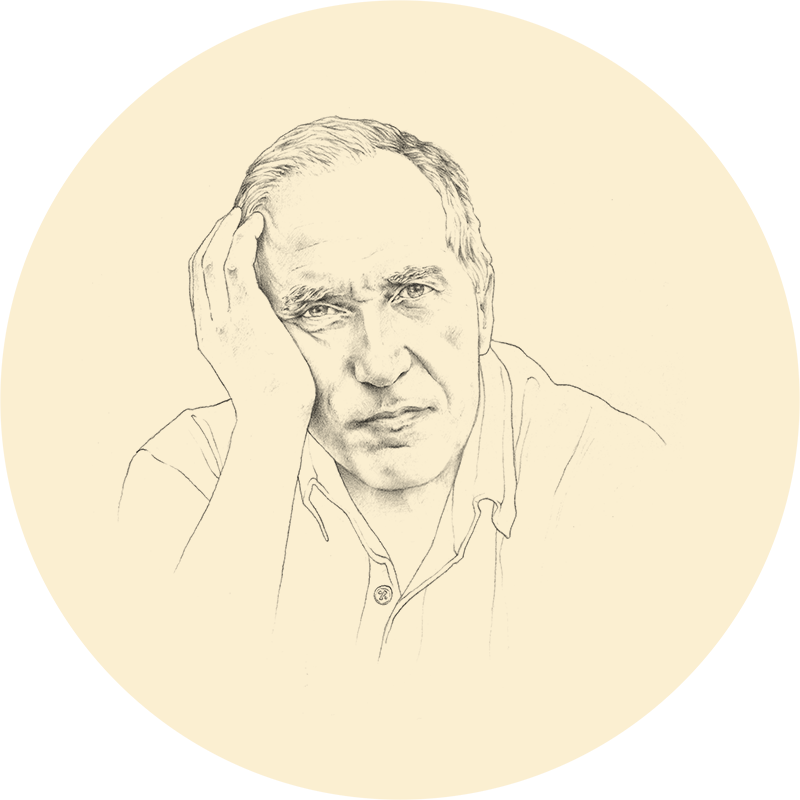Postwar Milan took the question to heart, without nostalgia, as was its wont. “I don’t know if the Merlin Act solved the problem of prostitution in Italy,” you wrote back then, with your usual appealing irony, “but I do know for sure that it put an end to my rental agreement.” Modernity was tearing down the neighborhood, so you had to look for a new place in which to develop your physical thoughts, your concrete philosophy. In 1962 you rented a big shed from the municipal government, at Via Bocconi 15, the first prefabricated structure ever built in Lombardy, belonging to the defunct “Opera post bellica” (you weren’t even sure which postwar that meant).
The enclosure wall blocked out the voracious gaze of speculators, an in the unkempt garden you could finally find your own hortus conclusus, a place to grow both soul and vegetables. A place to accumulate works, to delve into materials, all kinds of them. Wood, bronze, cement, stone, ceramics, plastic, glass, even water. You sought the dignity of every substance, the logic concealed from view. Like your works, which always hide something else to be discovered, to summon by observing more closely, after having found the picklock that reveals the false bottom of the human mind. Surrealist? Maybe. Your friend Arturo Schwarz said you were the ideal heir to Dada, but that its nihilist dimension wasn’t for you. You believed in the world, even the hidden world; you believed in people. Even that mechanic who worked in a nearby garage, who had come to deliver a tank of acetylene, had understood this. While he was waiting for you to join him, in the maze of heaped up things, he saw a little pear tree, tried to pick the fruit and was astonished. It was one of your bronze works, you told him. From that day on, after work, he always came to visit you, whenever he could. Pierino, you called him, with affection. He was more than an assistant, he was a friend to whom nothing needed to be explained. On weekends you two would go to Val Sesia, to plant trees, or to look for branches and leaves for your sculptures.
 You treated all people, whatever their social status, like princes, Alik. You respected everyone at the Accademia, even that “fascistone” (as you jokingly called him) Francesco Messina. Then you had your friends, with whom you often traveled: with Schwarz in Turkey, with Eco in Yugoslavia, with Tadini to Panarea, together with your families, ever since you had fallen in love with sailing, after a race at Caprera with Gian Maria Volontè. Though perhaps the most amazing voyage was the one with your wife Adriana, in 1956, with your little Fiat 500, all the way to Iran. You had met her in your father’s hometown, at Cittanova, in Calabria. You wrote each other ardent love letters, though her future marriage had already been arranged. To your mind, as the offspring of an international culture, so not Catholic, not conservative, certain rituals belonged to bygone days. But out of respect you didn’t lay a hand on her before your wedding.
You treated all people, whatever their social status, like princes, Alik. You respected everyone at the Accademia, even that “fascistone” (as you jokingly called him) Francesco Messina. Then you had your friends, with whom you often traveled: with Schwarz in Turkey, with Eco in Yugoslavia, with Tadini to Panarea, together with your families, ever since you had fallen in love with sailing, after a race at Caprera with Gian Maria Volontè. Though perhaps the most amazing voyage was the one with your wife Adriana, in 1956, with your little Fiat 500, all the way to Iran. You had met her in your father’s hometown, at Cittanova, in Calabria. You wrote each other ardent love letters, though her future marriage had already been arranged. To your mind, as the offspring of an international culture, so not Catholic, not conservative, certain rituals belonged to bygone days. But out of respect you didn’t lay a hand on her before your wedding.
Those who came to see you at Via Bocconi would find you busy with a hoe in the garden, picking fruit from the trees, or feeding the animals that roamed about in there – rabbits, geese, stray cats – or working at the threshold of the shed, which had become a labyrinth packed with all kinds of stuff. It might be Pierino, or your daughter Fania – you understood each other even in silence, communicating by working – or it might have been Enrico Baj, who became an artist, in the end, precisely thanks to you. Your father and his father had spent the war together, and it was Alberto, the poet-chemist, who convinced his comrade in arms to let his son Enrico explore his talent, sending him to Brera. And so it went, though he also took a degree in law at the same time.
You liked to tell stories. You tried, over the years, to create a total artwork, full of stories, you as the implicit narrator, capable of hanging on for years to a little character, “Gustavo B.,” from sculpture to sculpture, often hidden amidst the bronze foliage, a character who grew up, fell in love, died. To narrate, with every means, through allusions, metaphors, to tell the tale even at the cost of getting the tone, the mode, slightly wrong. You were not afraid of making mistakes. It was human, it was the only way to find the limit and get beyond it.
